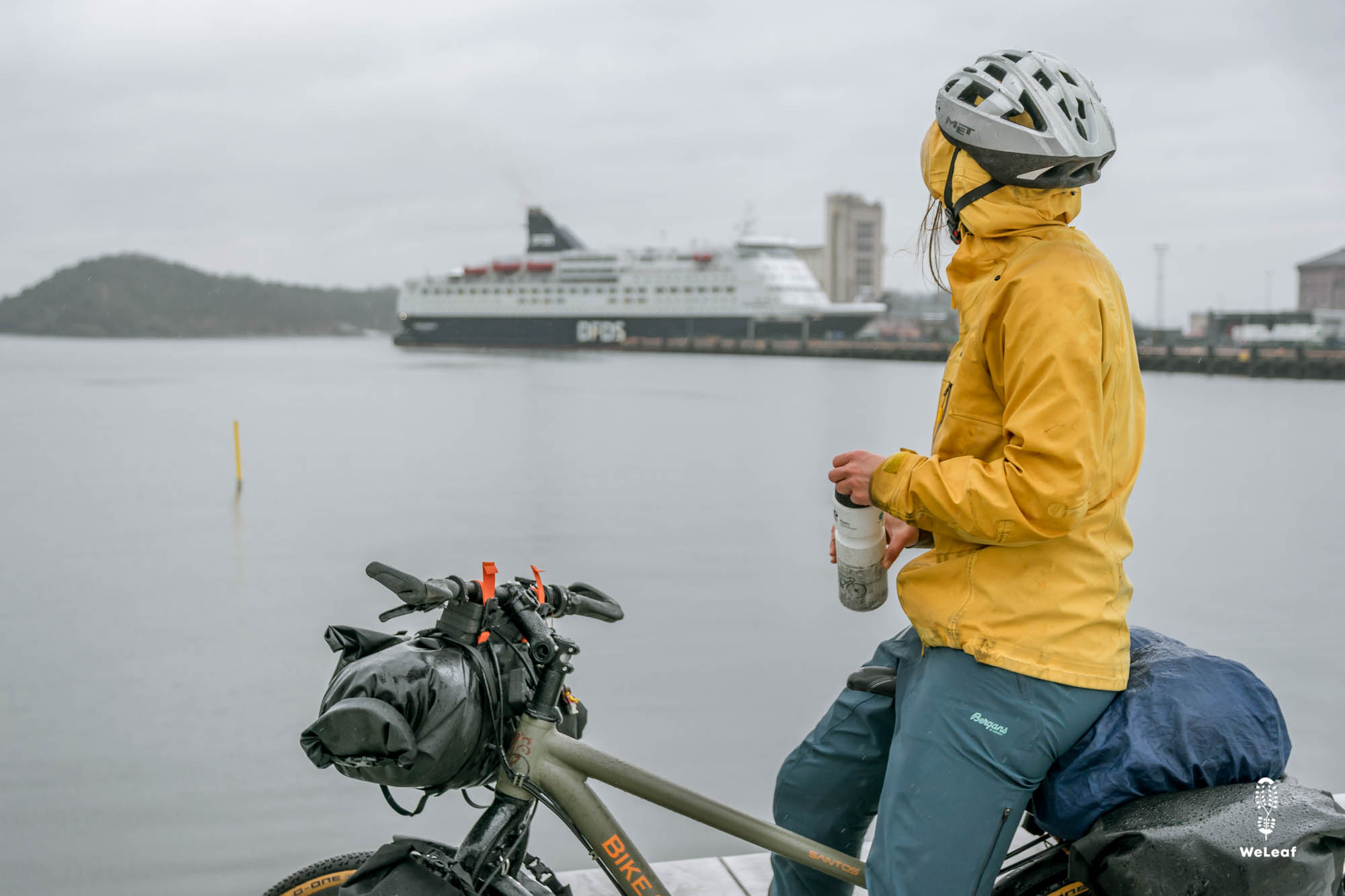
Cycling in Europe by train and boat

Resting on the bicycle
May 26, 2023
The most beautiful cycling routes to Scandinavia
August 11, 2023
A bicycle adventure with an interrail pass and the Oslo-Copenhagen ferry
We bike to the train station in Hamar. The platform is crowded with people who apparently all have the same train as us bound for Oslo. A short train hobbles into the station as we scan the doors for the bicycle symbol. Two strollers and another cyclist enter the same door. We just manage to squeeze in, everything but comfortable. For the next two and a half hours, we will have to stand up and hold our bikes. We couldn't buy a bicycle ticket online and have to pay it in the train. The conductor checks our Interrail passes and doesn't ask about bike tickets. A stroke of luck because it saves us €20 per person.
The next leg is a lot more comfortable. We roll into the belly of the ferry that takes us from Oslo to Copenhagen. One of the employees sees us arriving and sets up a bike rack against the wall of the ship. We put our bikes in the rack, secure them with our lock and take our panniers to the seventh floor. The boat has a price tag, of course, but in return we get a nice room with a view of the sea, Wifi and a buffet breakfast. Perhaps the greatest luxury is that we arrive in Copenhagen the next morning rested. The alternative would be a train ride through Sweden, including a long transfer in the middle of the night and uncertainty about whether our bikes would be allowed on the train. At 10 a.m. we bike out of the boat, into Copenhagen with a full stomach.
A month later, we are back in Norway. We traveled by train and ferry through Norway, Denmark, Germany, the Netherlands and Belgium. Below you will find all the information and our experiences about traveling by bike on the train and ferry.
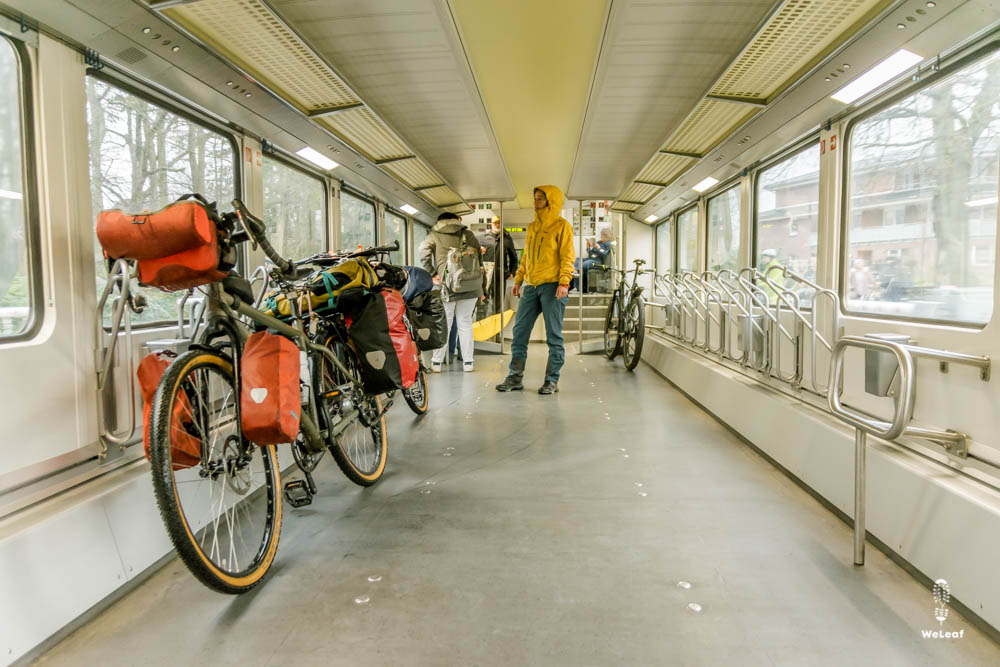
Entire train cars for bikes in Germany
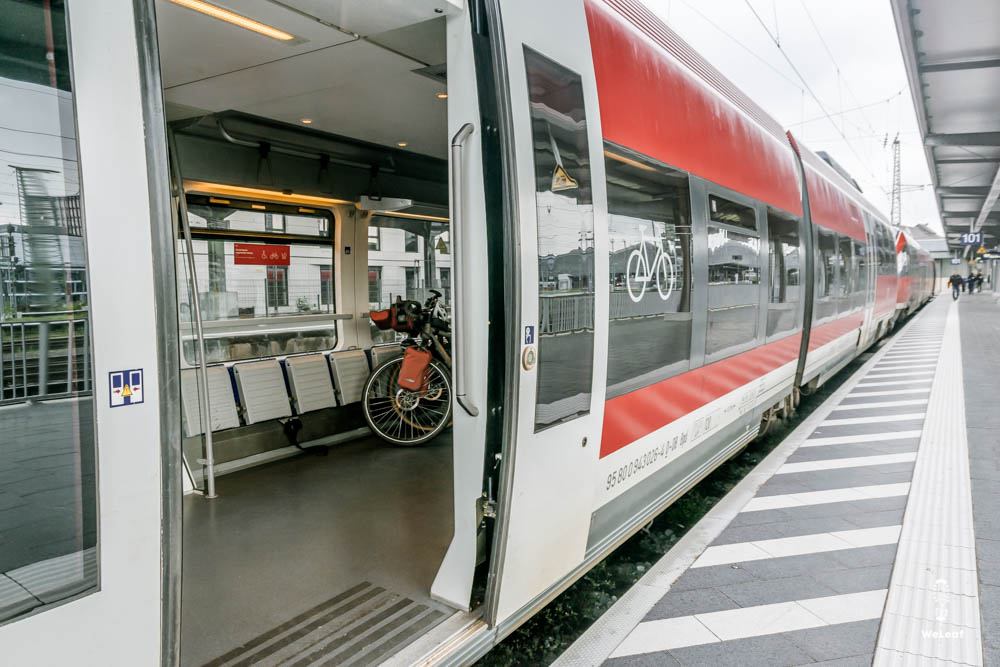
The search for the bicycle wagon
Using an Interrail pass with bicycles in Europe
Interrail pas
We are traveling with an Interrail pass across Europe. Since we will be traveling for just over a month, we choose a two-month pass with fifteen travel days. This gives us enough flexibility to change our plans along the way. The pass costs €518, a decent price, but you're paying mostly for the tremendous flexibility.
The Interrail pass is especially convenient because of its simplicity. In one app we can plan, compile and change our entire trip. It is super easy to add or change itineraries, see the number of travel days used and plan different trips. The QR codes in the app serve as tickets for the train.
As nice bonuses, there are the map and statistics page that shows the number of miles and hours spent on the train.
For cycling, the Interrail pass does not yet have a solution. On the Interrail website there are a few links to pages of different train companies, but booking via the app is not possible. Therefore, it remains a puzzle to figure out which train requires a reservation and where to buy the bike ticket. Sometimes it has to be done through an app, sometimes through a website. In a few years this functionality will surely be available in the app, but right now it's a bit more hassle.
Price comparison
We only used 9 out of the 15 travel days of our Interrail pass. If we were to buy all the tickets ourselves from the different carriers in the different countries, we would arrive at almost the same price - €525 compared to €518. If we would have used more travel days, the pass would only have been more valuable.
Advantages
- Flexibility to change the tickets until the very last moment.
- Easy to plan and book train trips crossing several borders.
- Usefull app the plan and change a complete trip.
- Usabele Offline.
Disadvantages
- Bicycle tickets can't be bought through the app.
- The train times in the app are not real-time and thus do not take into account disruptions, strikes or delays.
Without an interrail pas?
The biggest advantage of the interrail ticket is its enormous flexibility. Even down to the train you can adjust a ticket and change the trip. This allowed us to cycle without stress and planning, which we ourselves found very pleasant. If you fix the entire trip in advance and can be totally inflexible, you can travel without an Interrail pass. It probably won't be cheaper.
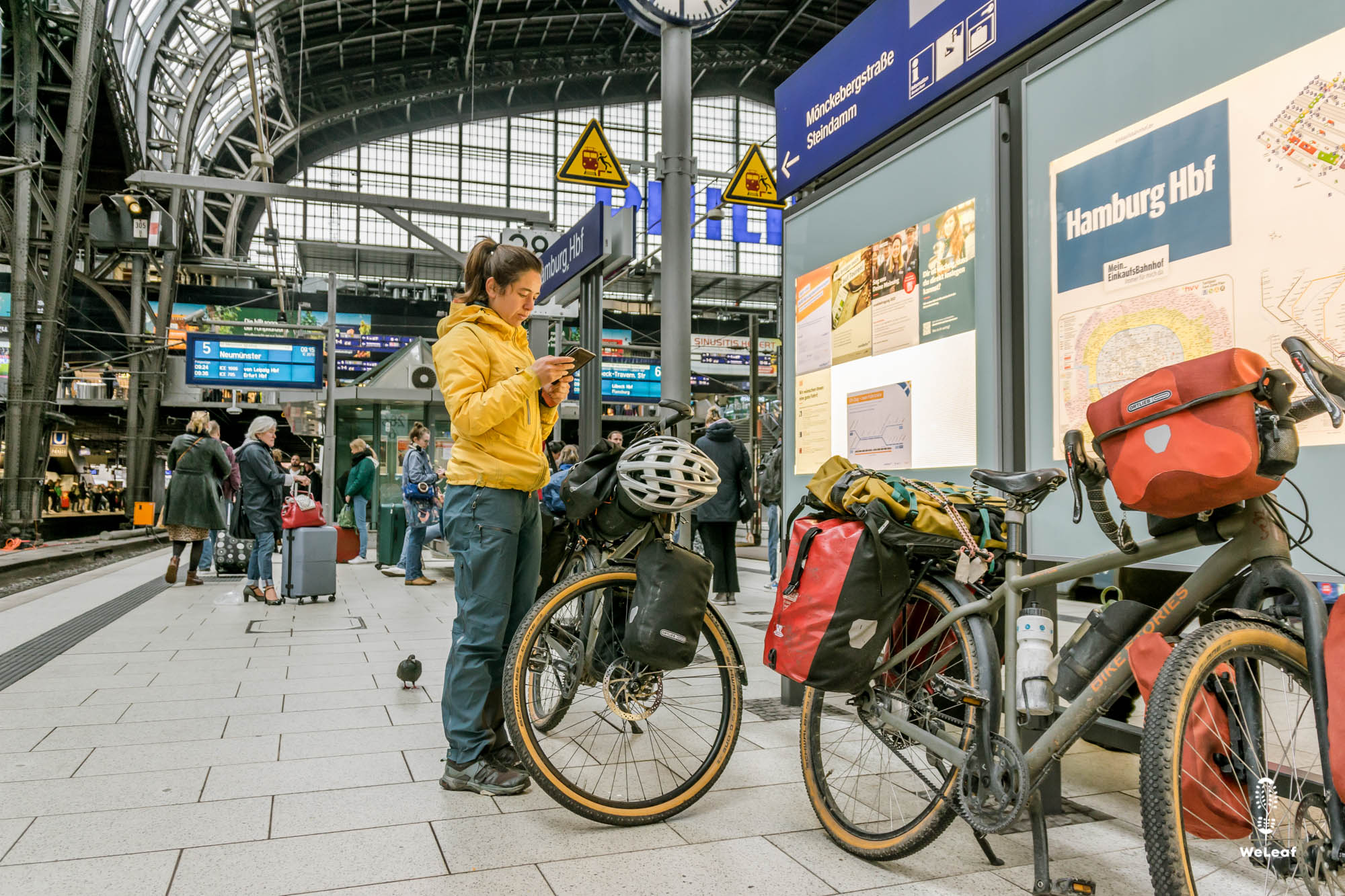
Hamburg Hauptbahnhoff
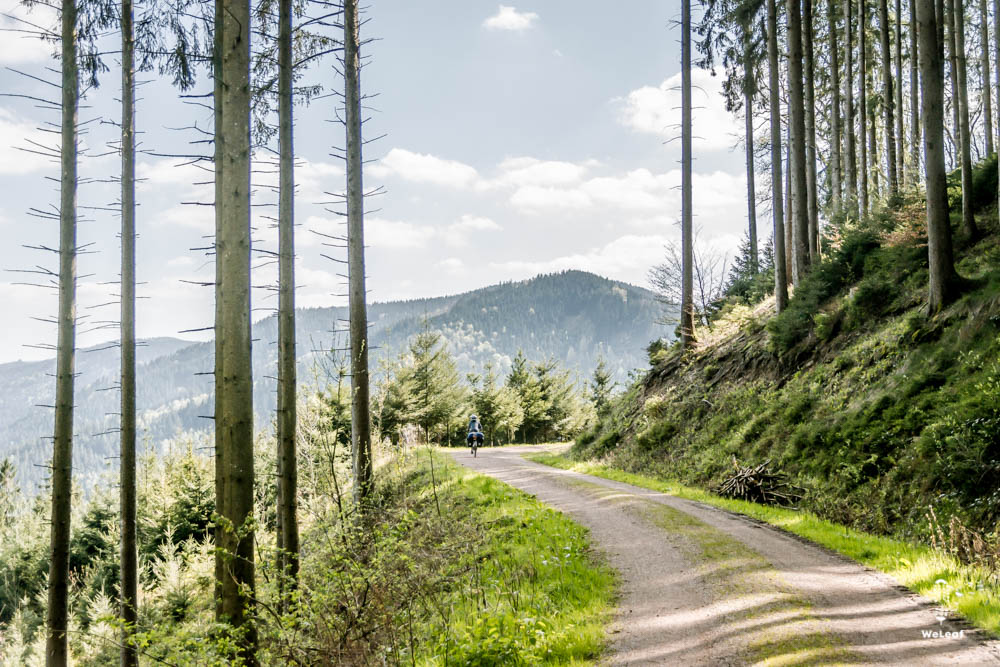
Bicycles in the train
Taking the bike on the train is always a bit of a challenge. It starts with finding the carriage where the bikes are allowed. Once we find it, we hope the step isn't too high to lift the packed bike inside. Once inside, it is always a surprise how much room there is for our bicycle. This varies greatly from country to country and from train to train. Because we have so much luggage with a fair amount of valuables, we don't like to leave our bikes alone on the train. Sometimes there are seats close by so we can keep an eye on them, but often we have to sit on an uncomfortable folding seat or on the floor next to the bike. Despite its drawbacks, the train remains one of the best ways to take the bike long distance. It is environmentally conscious, the bike does not have to be disassembled (except for certain countries) and we see the scenery along the way. We can enjoy traveling by train immensely and know that the bike is inconvenient for a while now, but it gives us tremendous freedom afterwards. It is totally worth it.
Norway
- A reservation for bikes is required and are tied to the train. The most convenient website or app to plan train travel in Norway is Entur.
- The cost of the bicycle is equal to the price of a ticket for children, about 40% of the price for an adult. Way too expensive compared to other countries in Europe.
- On a lot of routes, bike reservations are not possible in advance and it depends on the train (and conductor) if there is room on board. Payment must then be made on the train, but often you get lucky with the conductor. Last year the conductor said with a wink, "Just buy a big box of ice cream for that money."
- Places for bicycles vary greatly from train to train. Sometimes there is a separate carriage where the bike goes, sometimes the bike has to go in the seat compartment and there is little room.
Denmark
- A reservation for bikes is required and are bound to the specific train.
- A ticket for the whole route costs around 20DKK (about 2,5 euros) which is very cheap. The ticket is tied to a fixed train though so if you miss a train, you have to buy a new ticket.
- Reservations must be made through DSB's app. There you choose a seat reservation that applies to a seat or a spot for the bike.
- There is plenty of room for bikes on Danish trains. There you notice again that Denmark is a bicycle country.
Germany
- In ICE trains reservations are required. The cost is €9 per trip and this also covers the cost of regional trains you take before or after. The reservation is tied to a specific train and there are special bike spots on the trains, numbered with the reservation. Bike-only tickets can be purchased at https://next.bahn.de
- On regional trains, you don't have to make reservations, but you do have to buy a bike ticket. This costs €6 per day. The places for bikes are often very spacious, sometimes even a whole carriage.
- Around large cities, there are often S-bahnen (a kind of long-distance subway) where bikes are not allowed during rush hours (between 6 a.m. and 9 a.m., and between 4 p.m. and 7 p.m.)
- In certain regions, such as Baden-Wurtenberg, you do not have to pay for bicycles during off-peak hours.
The Netherlands
- Reservation is not required.
- A bicycle ticket is required. The costs are €7,5 per day.
- Tickets can be purchased through the NS app or from a ticket machine at the station.
- Places for bikes are very limited, and trains are usually crowded. A shame in a cycling country like the Netherlands.
Belgium
- Reservation is not required.
- A bicycle ticket is required. The costs are €4 per trip.
- Tickets can be purchased from the NMBS website or from a ticket machine at the station. The NMBS has a BikeOnTrain planner
- Places for bikes are very limited, and trains are usually crowded.
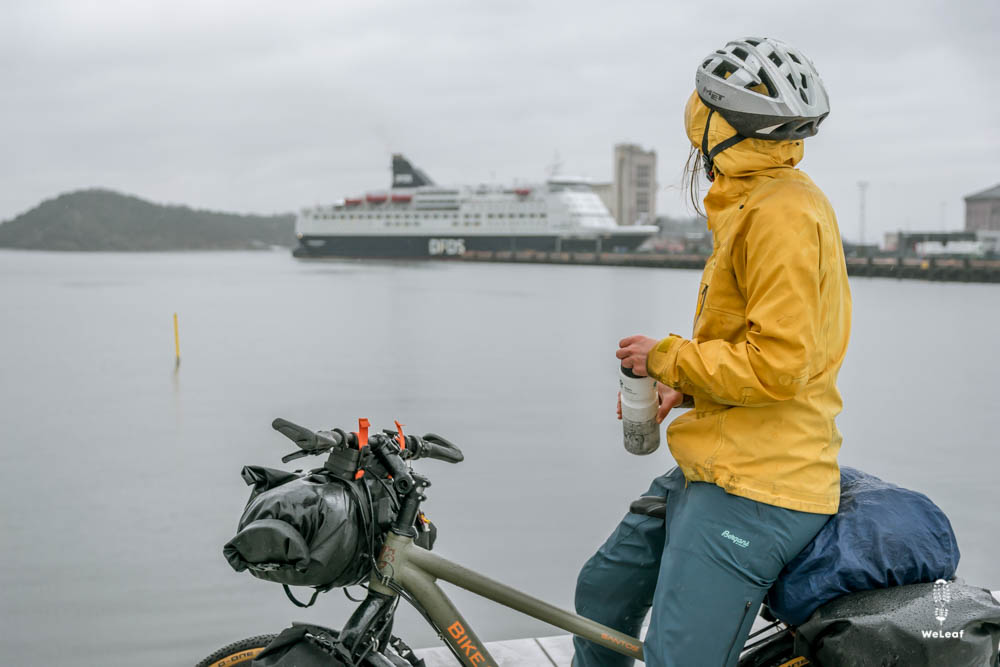
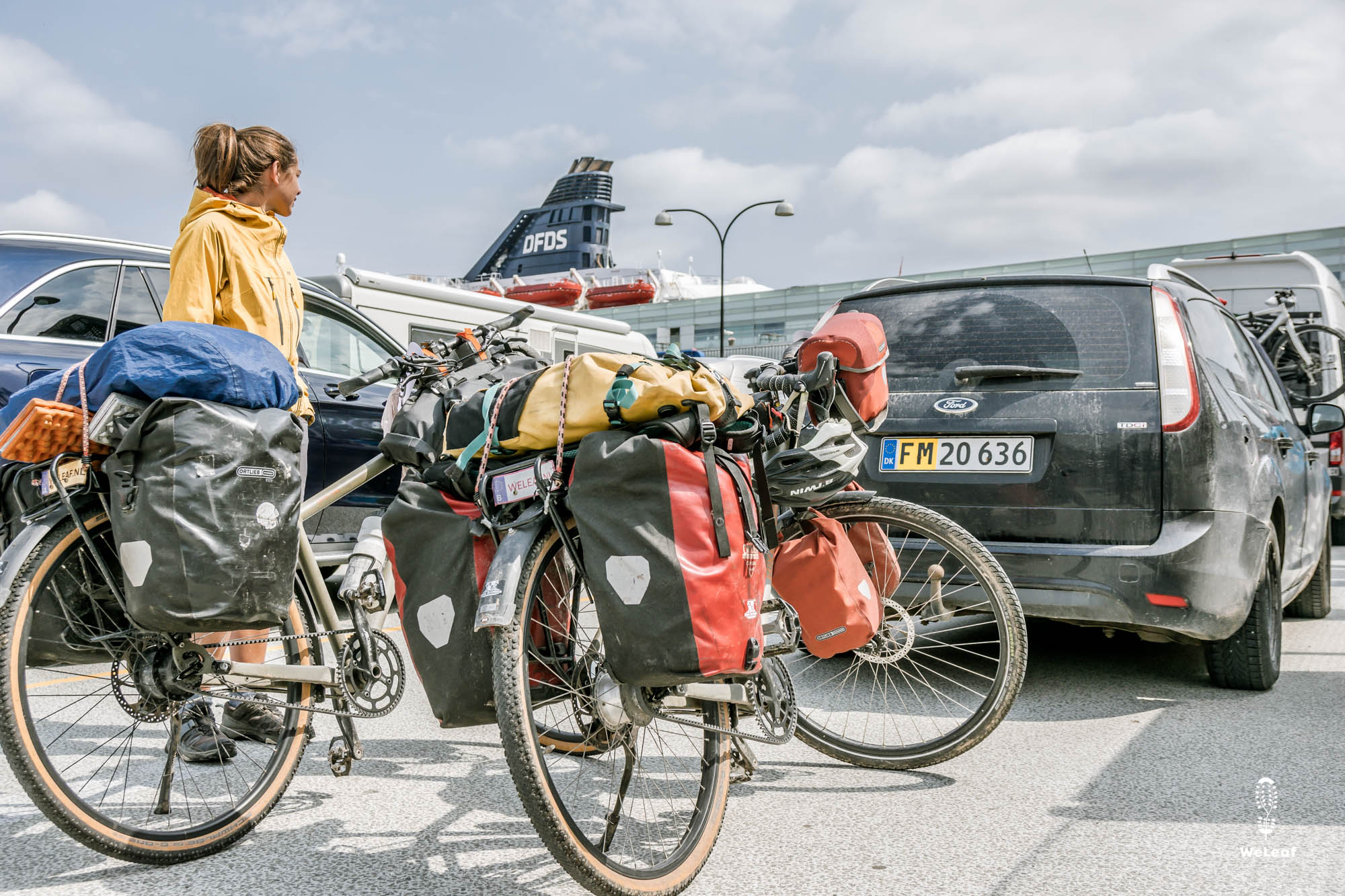
From Oslo to Copenhagen by ferry
In the middle of Oslo city center, we cycle into the belly of the DFDS ferry. One of the employees takes a bike rack where we can park our bikes. We take our panniers and walk to the seventh floor. There we find our cabin, one with a sea view. From the window we can see Oslo's opera house, the fortress and all the little harbors. Zoë sprawls out on the bed, grabs the white sheets and smells the fresh scent of laundry. Like the train, we can greatly enjoy a night on the boat. The slow travel, obligatory moment of relaxation, is wonderful. And then this feels ten times more luxurious. No awkward transfers in the night and sleeping in a chair, but relaxing in a bed. Our cabin includes Wifi, a shower and a breakfast buffet. Anyone who travels by bicycle understands the luxury of these things. After many days on the road without internet, shower and breakfast of dry granola, this is pure enjoyment and an indulgence we have earned. The basic cabins in the ferry are without Wifi and breakfast, but still with a nice cabin and a quiet night on the boat. To avoid devouring the entire evening on the Wifi, we walk around the boat in the evening. There are bingo, live music, a disco and several restaurants. This must be pretty much life on a cruise ship. For us, very nice for a night, but not for a whole week.
The next morning we slide into the breakfast buffet. Gee, what a luxury and what a choice. We keep eating until we can almost roll back to our cabin. Today we can skip lunch :). Totally rested, we roll into Copenhagen. Surely that is a very nice feeling. We explore the city by bicycle, almost obligatory in a city that calls itself "the best cycling city in the world". It really is a cycling city, but we can argue about that "best".
Starting at
Bicycle + Cabin
Departures
per week
Short route
Oslo - Frederikshaven
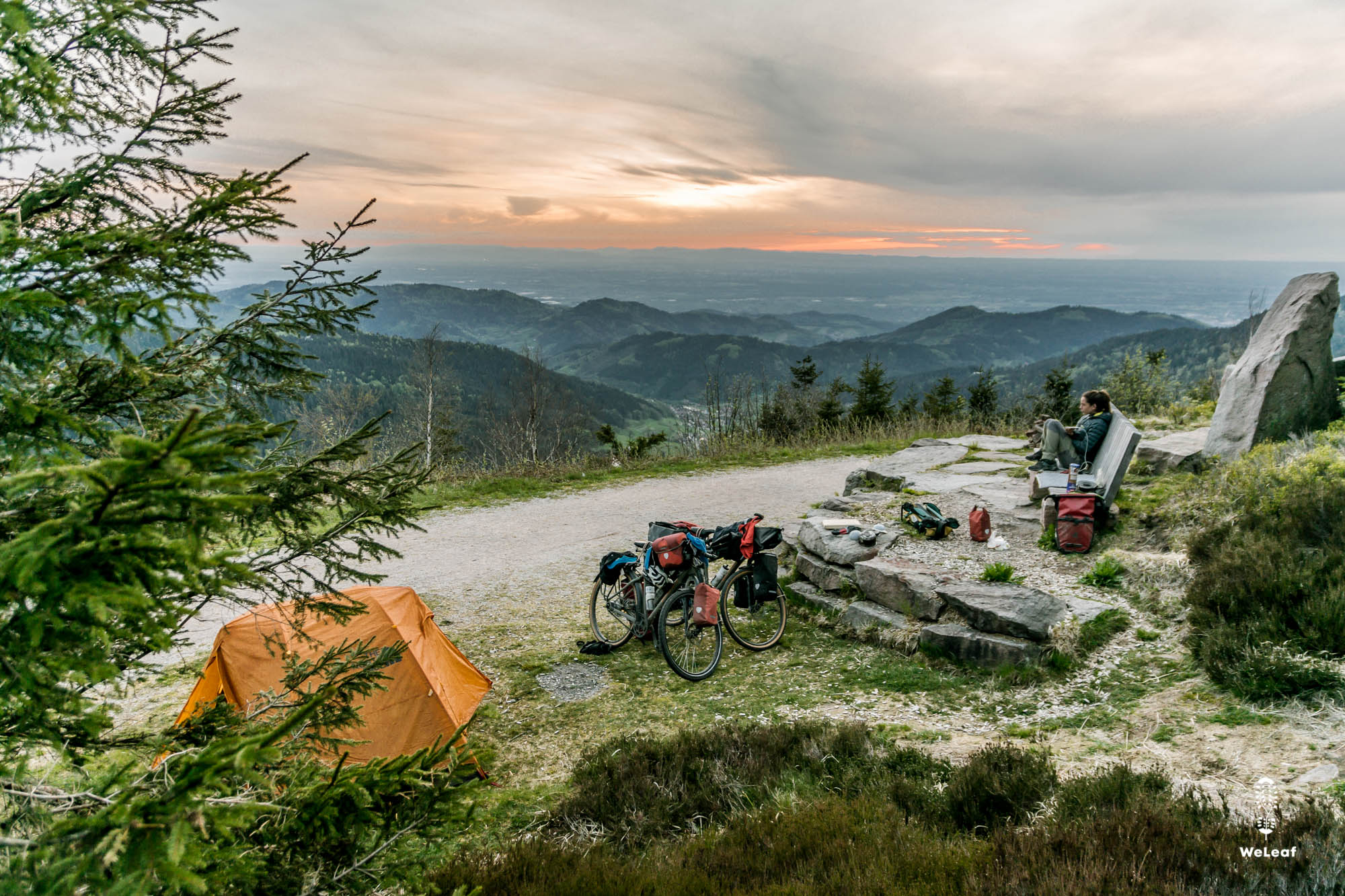




1 Comment
[…] Cycling in Europe by train and boat […]